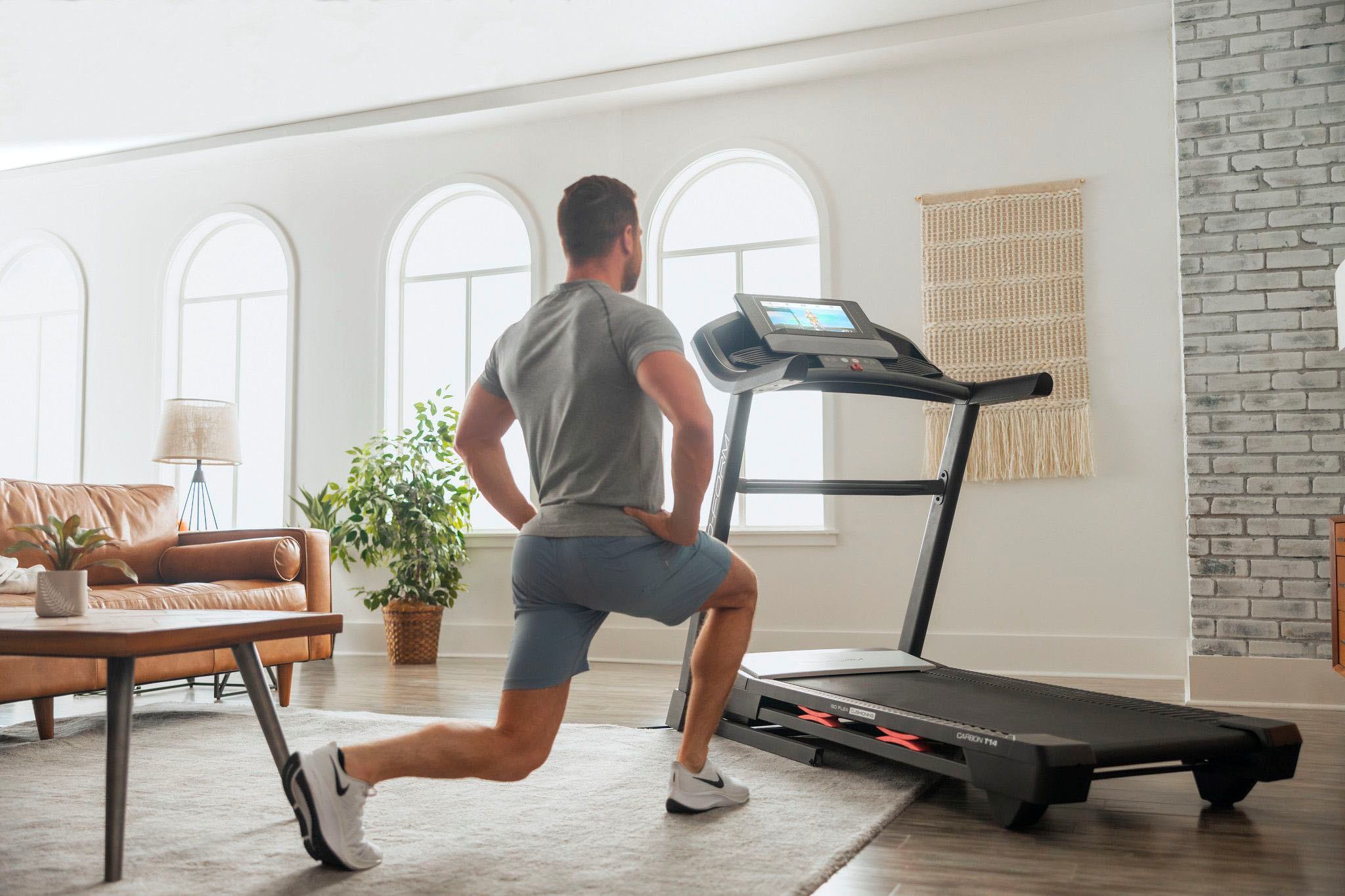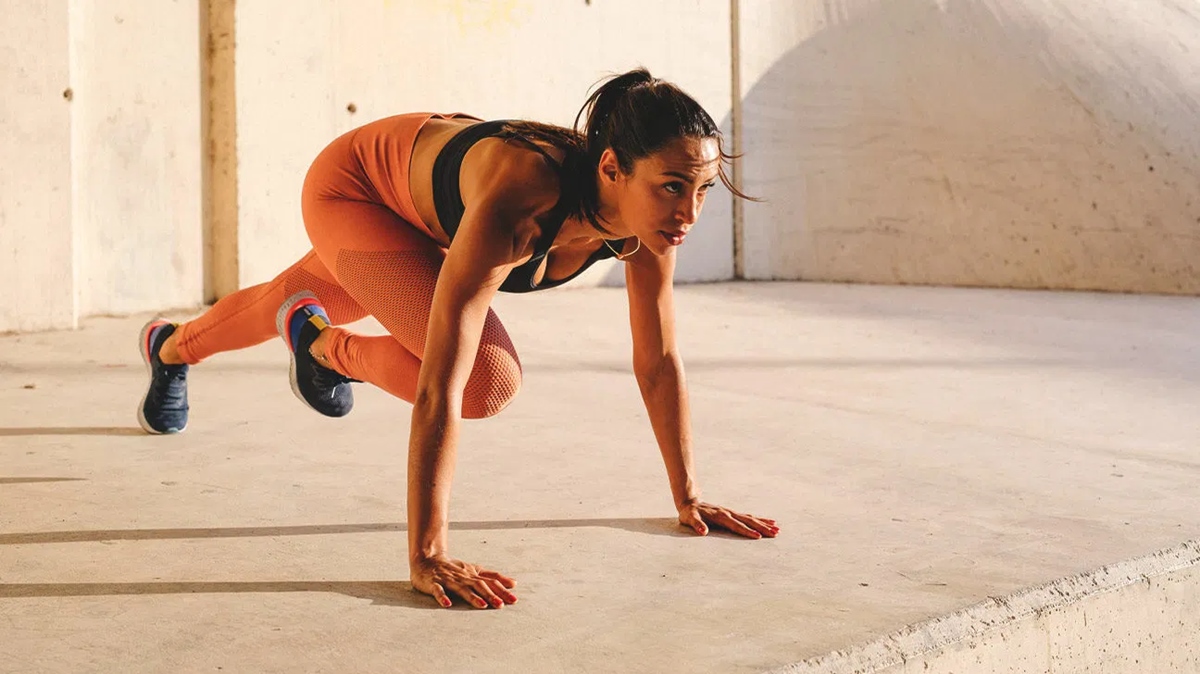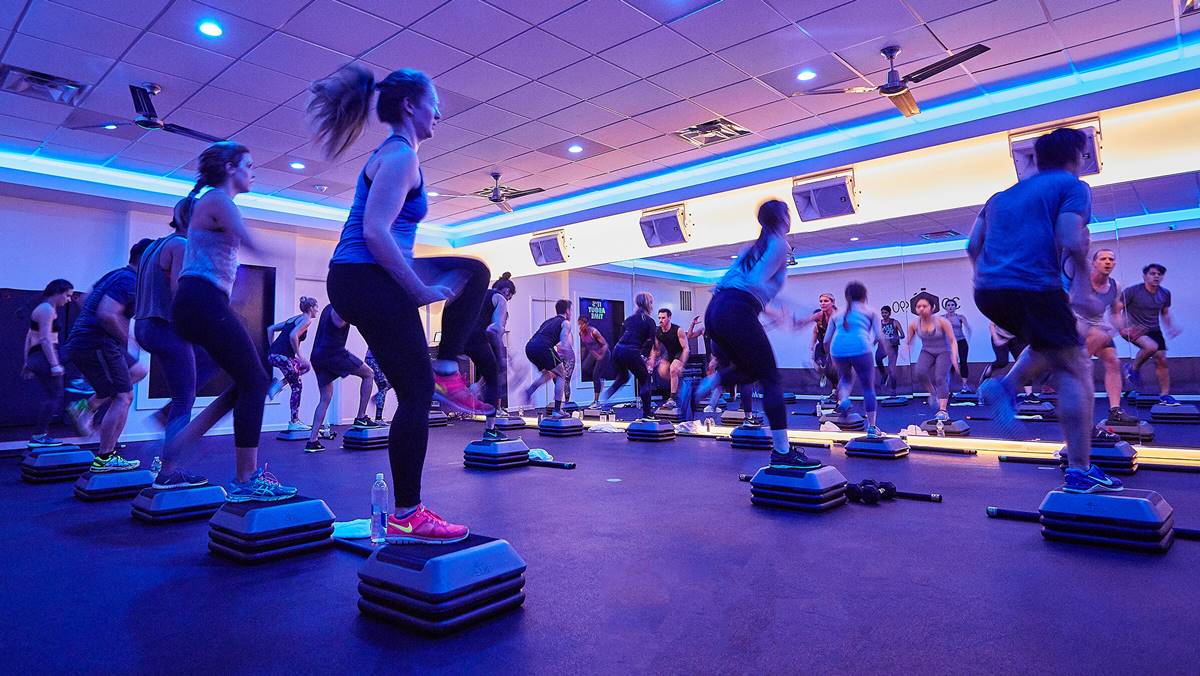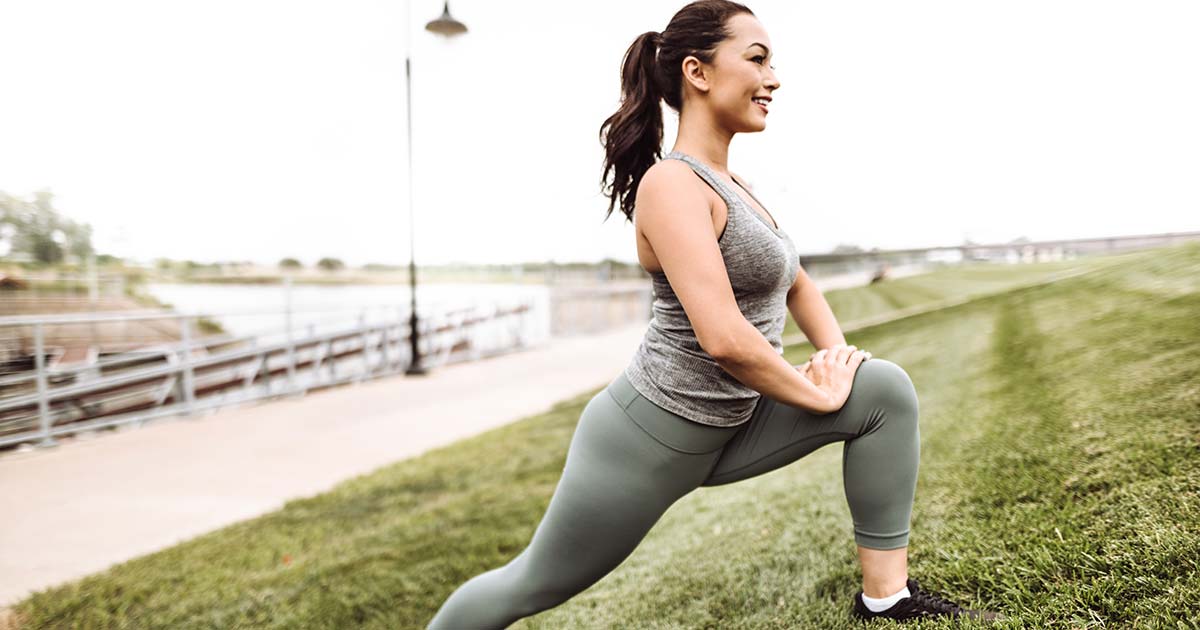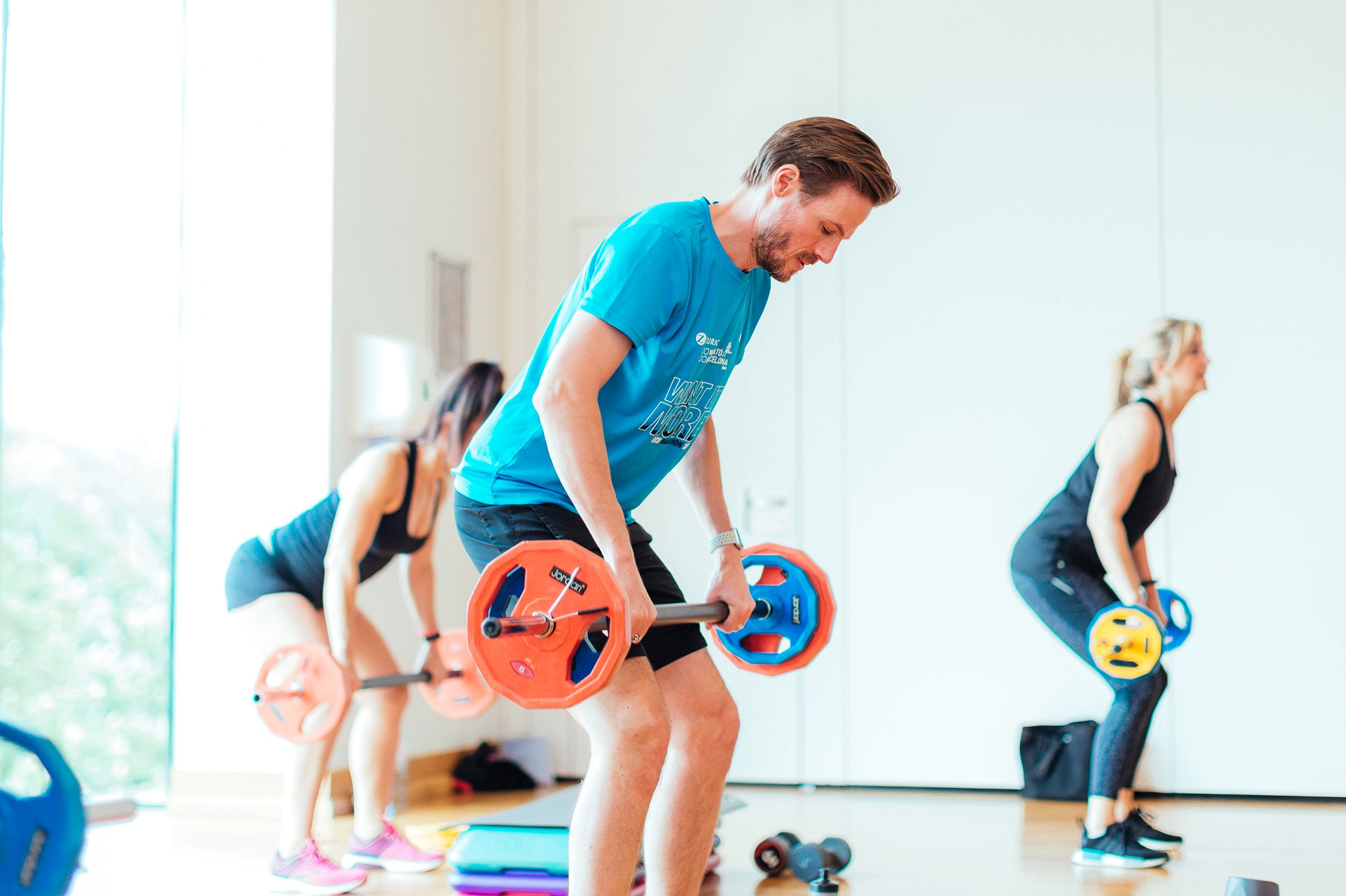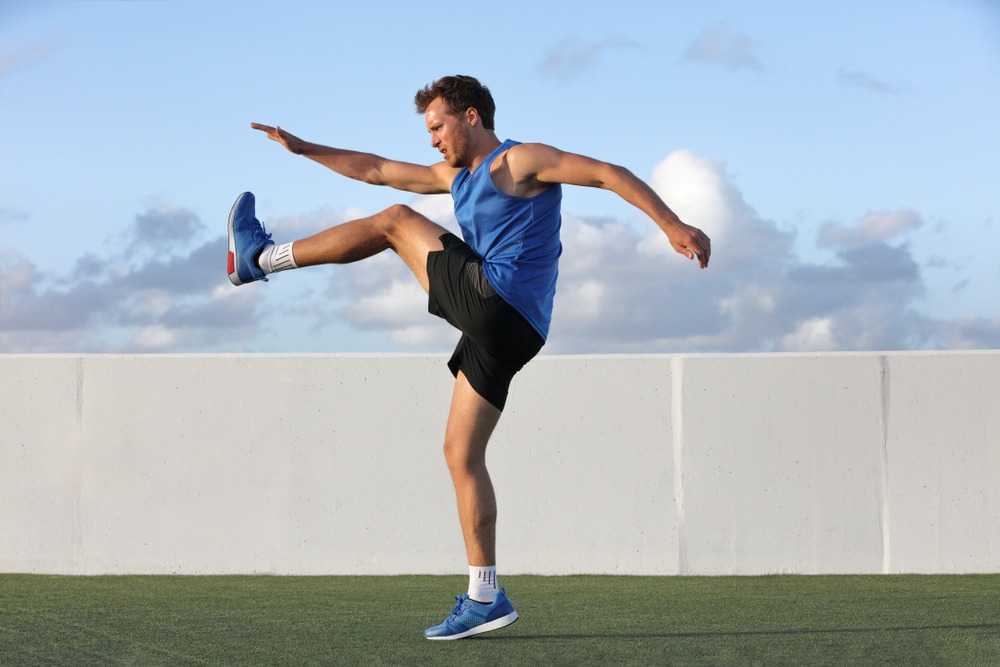

Featured
What Is Dynamic Exercise
Modified: January 2, 2024
Discover the benefits of dynamic exercise and how it can transform your fitness routine. Get featured workouts, tips, and techniques to achieve optimal results.
Introduction
Welcome to the world of fitness, where exercise plays a vital role in improving our physical and mental well-being. When it comes to exercising, there are various types that cater to different goals and preferences. One popular category of exercise is dynamic exercise, which focuses on movement and active engagement of multiple muscle groups.
Dynamic exercise is an integral part of many fitness routines, as it offers numerous benefits ranging from increased flexibility and strength to improved cardiovascular fitness. Whether you are an athlete, a fitness enthusiast, or someone just starting their fitness journey, understanding dynamic exercise and its advantages can greatly enhance your workout routine.
In this article, we will delve into the world of dynamic exercise, exploring its definition, benefits, different types, and how it differs from static exercise. We will also provide practical tips on how to incorporate dynamic exercise into your fitness routine and ensure your safety during your workouts.
So, let’s dive in and discover the dynamic side of exercise, empowering you to reach your fitness goals and enjoy a healthier, more active lifestyle.
Definition of Dynamic Exercise
Dynamic exercise, also known as dynamic movement or dynamic training, refers to physical activities that involve active, coordinated movements of the body through a full range of motion. It focuses on engaging multiple muscle groups simultaneously, promoting flexibility, strength, and overall fitness.
Unlike static exercise, which involves holding a position or maintaining a fixed posture, dynamic exercise emphasizes continuous movement. It incorporates various exercises that require body movements such as bending, stretching, twisting, jumping, and running.
The goal of dynamic exercise is to improve functional fitness, which encompasses the ability to perform everyday activities with ease and efficiency. By engaging the muscles in a dynamic manner, this type of exercise enhances stability, balance, agility, and coordination, translating into improvements in daily activities and sports performance.
Dynamic exercise can be adapted to meet individual fitness levels and goals. It can range from low-impact exercises, such as yoga flows or walking lunges, to high-intensity workouts, such as plyometrics or circuit training.
At its core, dynamic exercise is about keeping the body in motion, challenging the muscles, and promoting overall fitness and functionality. It offers a wide range of benefits, making it a valuable addition to any fitness routine.
Benefits of Dynamic Exercise
Dynamic exercise offers a plethora of benefits that can positively impact both your physical and mental well-being. Let’s explore some of the key advantages of incorporating dynamic exercise into your fitness routine:
- Improved Flexibility: Dynamic exercise involves a wide range of movements that stretch and lengthen the muscles. Regular practice can enhance flexibility, improving joint mobility and reducing the risk of injury.
- Increased Strength: The dynamic nature of these exercises engages multiple muscle groups, leading to improved muscular strength. As you move through a variety of motions, your muscles are challenged, and over time, they become stronger and more resilient.
- Enhanced Cardiovascular Fitness: Many dynamic exercises involve continuous movement, which elevates your heart rate and increases cardiovascular endurance. This improves heart health, promotes efficient oxygen delivery, and boosts overall stamina.
- Better Body Composition: Dynamic exercises, especially high-intensity ones, can contribute to weight loss and fat burning. They increase calorie expenditure, promote lean muscle mass development, and improve metabolic efficiency.
- Improved Balance and Coordination: Dynamic exercises require coordination between different muscle groups, along with balance and stability. Regular practice can enhance these skills, reducing the risk of falls and injuries in daily life.
- Stress Relief: Engaging in dynamic exercises releases endorphins, also known as the “feel-good” hormones, which can help reduce stress and boost mood. Regular physical activity has been shown to improve mental well-being and alleviate symptoms of anxiety and depression.
- Functional Fitness: The movements performed in dynamic exercise mimic real-life activities, such as lifting, bending, twisting, and reaching. By training the body to move in a functional and coordinated manner, you improve your ability to perform everyday tasks with ease and efficiency.
These are just a few of the many benefits that dynamic exercise can provide. By incorporating this type of exercise into your fitness routine, you can experience improvements in strength, flexibility, cardiovascular fitness, balance, and overall well-being.
Types of Dynamic Exercise
Dynamic exercise encompasses a wide range of activities that involve movement and engagement of multiple muscle groups. Here are some of the most popular types of dynamic exercise:
- Plyometrics: Plyometric exercises involve explosive movements that generate maximum force in a short amount of time. Examples include jump squats, box jumps, and burpees. These exercises improve power, speed, and agility.
- Interval Training: Interval training combines periods of high-intensity exercise with periods of rest or lower intensity. It can be done through various activities like running, cycling, or swimming. This type of exercise improves cardiovascular endurance and burns calories effectively.
- Calisthenics: Calisthenics are bodyweight exercises that use the resistance of your own body to build strength, flexibility, and muscular endurance. Push-ups, squats, lunges, and planks are examples of common calisthenic exercises.
- Circuit Training: Circuit training involves performing a series of exercises, usually targeting different muscle groups, with minimal rest in between. It combines strength training and cardiovascular exercise, providing a full-body workout.
- Dance Fitness: Dance fitness classes, such as Zumba or hip-hop dance workouts, combine choreographed movements with energetic music. They provide a fun and dynamic way to improve cardiovascular fitness, coordination, and rhythm.
- Dynamic Yoga: Dynamic yoga practices, such as Vinyasa or Power yoga, involve flowing movements linked with breath. These sequences help improve strength, flexibility, and mind-body connection.
- Sports-Specific Training: Dynamic exercises can be tailored to specific sports, replicating the movements and demands required for optimal performance. This type of training focuses on improving agility, speed, and strength related to the sport of choice.
These are just a few examples of dynamic exercises, but there are countless variations and combinations that can be incorporated into your fitness routine. It’s important to choose exercises that align with your goals and preferences, and to gradually increase the intensity and difficulty as your fitness level improves.
Dynamic Exercise vs. Static Exercise
Dynamic exercise and static exercise are two different approaches to physical activity, each with its own benefits and characteristics. Understanding the differences between these two types of exercise can help you make informed decisions about your fitness routine. Let’s explore the distinctions:
Movement: The main difference between dynamic exercise and static exercise lies in their approach to movement. Dynamic exercise involves continuous and active movement, engaging multiple muscle groups throughout the exercise. On the other hand, static exercise involves holding a position or maintaining a fixed posture without significant movement.
Muscle Engagement: Dynamic exercise requires the muscles to work dynamically, contracting and lengthening as you move through different ranges of motion. This promotes strength, flexibility, and coordination. With static exercise, the focus is on sustaining tension in specific muscles or holding a position, making it more effective for muscle endurance and isometric strength.
Cardiovascular Impact: Dynamic exercise, featuring constant movement, often elevates the heart rate and improves cardiovascular fitness. It enhances cardiovascular endurance, strengthens the heart muscle, and promotes efficient oxygen delivery. Static exercise, on the other hand, has a minimal impact on cardiovascular fitness since it typically does not elevate the heart rate significantly.
Range of Motion: Dynamic exercise involves moving through a full range of motion, which promotes joint flexibility and improves mobility. It helps to prevent stiffness and maintain functional movement patterns. In contrast, static exercise does not emphasize exploring the full range of motion but focuses on stability and control in a specific position.
Functional Fitness: Dynamic exercise often emphasizes functional movements that mimic real-life activities, facilitating better performance in daily tasks and sports. It improves balance, coordination, and body awareness. Static exercise, while offering its own benefits, may not directly contribute to functional fitness and may have limited transferability to real-life movements.
Application in Fitness Routines: Both dynamic and static exercises have their place in a well-rounded fitness routine. Dynamic exercise is typically used for warm-ups, total-body workouts, and activities that require cardiovascular endurance and muscle engagement. Static exercise, on the other hand, is commonly utilized for targeted muscle strengthening, flexibility training, and post-workout stretching.
It’s important to note that dynamic and static exercises are not mutually exclusive and can complement each other. Combining both types of exercise in your fitness routine can offer a balanced approach to overall fitness, addressing different aspects of strength, flexibility, endurance, and functional movement.
How to Incorporate Dynamic Exercise into Your Fitness Routine
Adding dynamic exercise to your fitness routine is a fantastic way to enhance your overall fitness and take your workouts to the next level. Here are some tips on how to incorporate dynamic exercise into your fitness routine:
- Warm-Up: Begin your workout with a dynamic warm-up routine to prepare your body for movement. This can include exercises such as arm circles, bodyweight squats, walking lunges, and shoulder rolls. Gradually increase the intensity and range of motion as you warm up.
- Circuit Training: Incorporate circuit training into your routine by performing a series of dynamic exercises back-to-back with minimal rest in between. This can include exercises such as jump squats, push-ups, mountain climbers, and burpees. Aim for a combination of upper body, lower body, and core exercises for a full-body workout.
- Interval Training: Integrate high-intensity interval training (HIIT) into your cardio workouts. Alternate between periods of intense, dynamic exercises (like sprints or high knees) and active recovery exercises (like jogging or walking). This method boosts your cardiovascular fitness and burns calories efficiently.
- Dynamic Strength Training: Replace some of your traditional strength exercises with their dynamic counterparts. For example, instead of a standard squat, try a squat jump. Instead of a regular lunge, perform walking lunges. This adds an element of explosiveness and increases muscle activation.
- Group Fitness Classes: Join dynamic group fitness classes that incorporate dynamic movements, such as dance fitness, kickboxing, or boot camp-style workouts. Not only will you benefit from the guidance of an instructor, but the energy and camaraderie of a group setting can also be motivating.
- Interval Walking or Running: If you enjoy walking or running, incorporate intervals of faster-paced movement into your routine. Alternate between a moderate pace and a faster pace to challenge your cardiovascular system and engage different muscle groups.
- Dynamic Yoga or Pilates: Try dynamic yoga or Pilates classes that focus on flowing movements and transitions between poses. These practices build strength, flexibility, and body awareness while promoting mindfulness and stress relief.
Remember to listen to your body and choose exercises that are appropriate for your fitness level. Start gradually and progressively increase the intensity and duration of your dynamic exercises over time. Consistency is key, so aim to incorporate dynamic exercise into your routine at least two to three times a week for optimal results.
Safety Tips for Dynamic Exercise
While dynamic exercise offers numerous benefits, it is essential to prioritize safety during your workouts to minimize the risk of injury. Here are some important safety tips to keep in mind when engaging in dynamic exercise:
- Consult with a Healthcare Professional: If you have any underlying health conditions or concerns, consult with a healthcare professional before starting any new exercise program. They can provide guidance tailored to your specific needs and ensure that dynamic exercise is safe for you.
- Proper Warm-Up: Always begin your dynamic exercise routine with a thorough warm-up. This helps to prepare your muscles, joints, and cardiovascular system for the upcoming movements. Incorporate dynamic stretches and mobility exercises to gradually increase your range of motion and prevent potential strains or pulls.
- Focus on Proper Form: Pay close attention to maintaining proper form and technique during dynamic exercises. This ensures effective muscle engagement and reduces the risk of injury. If you are unsure about the correct form, consider working with a certified fitness professional who can provide guidance and corrections.
- Gradual Progression: Gradually increase the intensity, duration, and complexity of your dynamic exercises over time. Progression should be gradual and based on your individual fitness level. Pushing yourself too hard too quickly can lead to injuries, so listen to your body and allow for appropriate rest and recovery.
- Use Appropriate Equipment: Wear proper workout attire and use appropriate equipment as needed. This may include supportive shoes, comfortable clothing, and any necessary safety gear for specific activities. Having the right equipment can enhance your performance and protect you from potential injuries.
- Stay Hydrated: Stay hydrated before, during, and after your dynamic exercise sessions. Proper hydration helps optimize performance and facilitates recovery. Remember to drink water regularly, especially in hot or humid environments.
- Listen to Your Body: Pay attention to any pain or discomfort during your workouts. If you experience sharp or persistent pain, dizziness, or difficulty breathing, stop exercising immediately and seek medical attention if needed. It’s important to honor your body’s limits and avoid pushing through pain.
- Rest and Recovery: Allow your body sufficient time to rest and recover between dynamic exercise sessions. This helps prevent overuse injuries and promotes overall muscle growth and adaptation. Incorporate active recovery activities such as stretching, foam rolling, or gentle low-impact exercises on rest days.
By following these safety tips, you can enjoy the benefits of dynamic exercise while minimizing the risk of injury. Remember, safety should always be the top priority in any fitness routine.
Conclusion
Dynamic exercise is a powerful tool in your fitness arsenal, offering a wide range of benefits for both your physical and mental well-being. By incorporating dynamic exercise into your fitness routine, you can improve flexibility, strength, cardiovascular fitness, balance, coordination, and overall functional fitness.
Whether you choose to engage in plyometrics, interval training, calisthenics, dance fitness, or other dynamic activities, the key is to find exercises that align with your goals and preferences. It’s important to start at your own fitness level and gradually progress to more challenging movements.
Ensure your safety during dynamic exercise by following proper warm-up routines, using proper form, gradually increasing the intensity, wearing appropriate workout attire, staying hydrated, and listening to your body. Consulting with a healthcare professional and working with a certified fitness professional can provide further guidance and support.
Incorporating dynamic exercise alongside static exercise can create a well-rounded fitness routine that encompasses strength, flexibility, cardiovascular fitness, and functional movement. Remember, consistency and patience are key to achieving long-term results, so commit to regular workouts and give your body adequate rest and recovery.
So, embrace the dynamic side of exercise and embark on a journey of improved fitness and well-being. Whether you are a beginner or an experienced fitness enthusiast, dynamic exercise can help you reach new heights and unlock your full potential.

